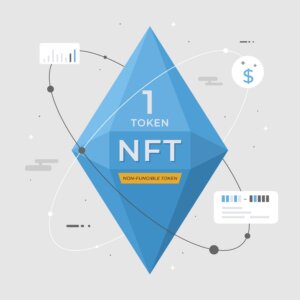A 1031 Exchange is a powerful tool that allows real estate investors to defer capital gains taxes when selling a property, provided the proceeds are reinvested in like-kind property. Understanding the state-specific considerations is crucial, especially in California, where high real estate values and complex tax regulations can significantly impact the exchange process.
This article aims to provide a comprehensive guide to the unique aspects and requirements of conducting a 1031 Exchange in California, helping investors navigate the state’s specific rules and maximize their tax deferral benefits.
Understanding the Basics of a 1031 Exchange
What Is a 1031 Exchange?
A 1031 Exchange, named after Section 1031 of the IRS Code, allows real estate investors to defer paying capital gains taxes on the sale of an investment property, provided they reinvest the proceeds into a similar, or “like-kind,” property.
The primary advantage of a 1031 Exchange is the ability to defer capital gains taxes, allowing investors to use the full proceeds from the sale to acquire a new property, thereby increasing their investment potential.
How It Works
The 1031 Exchange process involves several key steps. First, the investor sells the relinquished property. Rather than receiving the proceeds directly, the funds are held by a Qualified Intermediary (QI), a neutral third party who facilitates the exchange.
The investor then has 45 days from the sale date to identify potential replacement properties and 180 days to complete the purchase of the new property. The replacement property must be of like-kind, meaning it must be used for investment or business purposes.
Eligibility Requirements
To qualify for a 1031 Exchange, several requirements must be met:
- Like-Kind Property: The property sold and the property purchased must be of like-kind, which means they must both be used for investment or business purposes. The properties don’t need to be identical, but they must be similar in nature or character.
- Investment or Business Use: Both the relinquished and replacement properties must be held for productive use in a trade, business, or investment. Properties held primarily for personal use, such as a primary residence, don’t qualify.
- Qualified Intermediary: The investor must use a Qualified Intermediary to handle the exchange. The QI holds the proceeds from the sale and uses them to purchase the replacement property, ensuring that the investor doesn’t take constructive receipt of the funds.
Specific Considerations for 1031 Exchanges in California
High Property Values
California’s high real estate values significantly impact 1031 Exchanges. The state’s elevated property prices mean that the amount of deferred capital gains taxes can be substantial, making it even more important for investors to select replacement properties.
Investors must also ensure that the replacement property’s value is equal to or greater than the relinquished property’s sale price to fully defer the capital gains taxes.
State Taxes and the California Franchise Tax Board (FTB)
In addition to federal taxes, California imposes state income taxes on capital gains, which can be as high as 13.3% for high-income earners. The California Franchise Tax Board (FTB) requires that capital gains from the sale of California real estate be reported, even if they are deferred under a 1031 Exchange.
If the replacement property is located outside California, the FTB may require you to track the deferred gain and pay taxes on it if the replacement property is eventually sold in a taxable transaction.
Proposition 13
Proposition 13 plays a crucial role in how property taxes are assessed during a 1031 Exchange in California. Under Prop 13, property taxes are based on the property’s purchase price, and annual increases in assessed value are capped at 2%.
When conducting a 1031 Exchange, if the replacement property is acquired at a higher value than the relinquished property, the property tax assessment may increase, affecting the investor’s long-term costs.
Withholding Requirements
California requires a withholding on the sale of real estate by non-residents. For non-resident property owners participating in a 1031 Exchange, the state typically requires withholding of 3.33% of the sale price unless the transaction qualifies for an exemption. Investors should consult with tax professionals to navigate these requirements and avoid potential pitfalls.
Impact of Local Regulations
Local ordinances, zoning laws, and rent control measures can also impact the feasibility and profitability of a 1031 Exchange in California. Investors must know any local regulations that could affect their ability to develop or lease the replacement property. For example, strict rent control laws may limit rental income potential, while zoning restrictions could affect the property’s allowable uses.
Understanding these specific considerations is essential for successfully navigating a 1031 Exchange in California and maximizing the tax deferral benefits.
The Process of Completing a 1031 Exchange in California
Step 1: Choosing the Right Property
The first step in a 1031 Exchange is selecting both the relinquished and replacement properties that meet the IRS’s like-kind criteria. In California, where real estate values are high, careful selection is crucial to maximizing the tax deferral benefits.
Both properties must be held for investment or business use, and the replacement property’s value should be equal to or greater than the relinquished property to fully defer capital gains taxes. Consider local market conditions, property values, and potential appreciation when making your selections.
Step 2: Engaging a Qualified Intermediary
A Qualified Intermediary (QI) is essential for facilitating a 1031 Exchange. The QI holds the proceeds from the sale of the relinquished property and ensures compliance with IRS regulations. In California, it’s important to select a QI who is familiar with the state’s specific rules and tax implications. The QI’s role is critical, as they help navigate the complexities of the exchange, including timing, documentation, and legal requirements.
Step 3: Meeting California’s Identification Requirements
Under the 45-day rule, investors must identify potential replacement properties within 45 days of selling the relinquished property. In California’s competitive real estate market, this can be challenging. It’s advisable to start searching for replacement properties early and have a list of potential options ready.
The identified properties must be documented and submitted to the QI within the 45-day window to comply with IRS guidelines.
Step 4: Closing the Exchange
The closing of both the sale of the relinquished property and the purchase of the replacement property must be completed within 180 days. This involves coordinating with the QI, real estate agents, and legal professionals to ensure that all documents are in order and the transactions are executed on time. Delays can jeopardize the exchange, so it’s crucial to manage the timeline carefully.
Step 5: Filing with the IRS and FTB
After completing the exchange, investors must file IRS Form 8824, which details the 1031 Exchange transaction, with their federal tax return. California-specific filings, including state income tax forms, must be submitted to the California Franchise Tax Board (FTB). Accurate and timely filing is essential to avoid penalties and ensure the deferred gains are properly reported.
State Tax Implications of a 1031 Exchange in California
Capital Gains Tax Deferral
A 1031 Exchange allows for the deferral of capital gains taxes at both the federal and state levels. In California, this deferral is beneficial due to the state’s high real estate values, which can cause substantial capital gains.
California State Income Tax
California’s state income tax rates are among the highest in the nation, with rates up to 13.3% for high-income earners. Deferring state income taxes through a 1031 Exchange can result in significant savings, but it’s important to understand that these taxes will become due when the replacement property is eventually sold in a taxable transaction.
California Clawback Provision
California’s Clawback Provision requires that if the replacement property in a 1031 Exchange is eventually sold outside of California, the deferred state taxes must be paid. This provision ensures that California collects its share of taxes on the deferred gain, even if the property is no longer within the state.
Tax Implications for Non-Residents
Non-residents conducting a 1031 Exchange involving California property are subject to state taxes and may be required to withhold 3.33% of the sale price. Non-residents must carefully navigate these requirements to avoid penalties and ensure compliance with California’s tax laws.
Legal and Compliance Issues Specific to California
California Real Estate Law Compliance
California has unique real estate laws that impact 1031 Exchanges, including strict disclosure requirements, environmental regulations, and tenant rights. Compliance with these laws is critical to successfully completing an exchange. For instance, sellers must provide detailed disclosures about the property’s condition, and certain environmental assessments may be required, depending on the property type.
Proposition 19
Proposition 19, passed in 2020, affects property tax transfers in California. It allows certain homeowners, such as those over 55, to transfer their existing property tax base to a new home, but it also imposes stricter rules on inherited properties. When conducting a 1031 Exchange, it’s important to consider how Prop 19 might impact property tax assessments on the replacement property.
Potential Legal Challenges
Legal issues can arise during a 1031 Exchange, such as disputes over property conditions, zoning, or compliance with local ordinances. These challenges can delay or complicate the exchange process. Working with a California-based real estate attorney can help mitigate these risks and ensure that all legal aspects of the transaction are properly managed.
Consulting Legal Experts
Given the complexities of California’s real estate laws, consulting with a local real estate attorney is advisable. An attorney can provide guidance on compliance issues, help navigate Proposition 19’s implications, and address any potential legal challenges that may arise during the exchange process.
Benefits and Challenges of 1031 Exchanges in California
Benefits
Conducting a 1031 Exchange in California offers several advantages, including the deferral of significant capital gains taxes, the opportunity to diversify a real estate portfolio, and the ability to leverage California’s robust real estate market for potential long-term gains. The state’s high property values mean that even a modest percentage increase in value can result in substantial financial benefits.
Challenges
However, there are also unique challenges to consider. Finding suitable replacement properties in California’s high-demand market can be difficult, and investors must navigate strict timelines to complete the exchange. The high costs associated with California real estate, including taxes, insurance, and compliance with local regulations, can strain budgets and complicate the exchange process.
Market Volatility
California’s real estate market is known for its volatility, with significant fluctuations in property values over short periods. This volatility can impact the timing and success of a 1031 Exchange, as rapid market changes may affect the availability and pricing of replacement properties. Investors must be prepared to act quickly and decisively to mitigate the risks associated with market volatility.
Overall, while a 1031 Exchange in California can offer substantial financial benefits, it requires careful planning, a deep understanding of the state’s specific regulations, and a willingness to navigate the challenges of a dynamic real estate market.
Alternatives to 1031 Exchanges in California
Opportunity Zones
Investing in Opportunity Zones offers a powerful alternative to a 1031 Exchange for deferring capital gains taxes. Opportunity Zones are designated areas that encourage economic development by providing tax incentives to investors.
By reinvesting capital gains into a Qualified Opportunity Fund (QOF) that invests in these zones, investors can defer taxes on the original gain until the sale of the QOF investment or until 2026, whichever comes first. If the investment is held for at least 10 years, any appreciation in the QOF investment is tax-free.
Installment Sales
An installment sale allows property sellers to spread out capital gains taxes by receiving the sale proceeds in installments over several years. This method reduces the immediate tax burden, as the seller only pays taxes on the portion of the gain received each year. Installment sales can be useful for those who wish to manage their tax liability more gradually, but they don’t offer the full deferral benefits of a 1031 Exchange.
Deferred Sales Trusts
A Deferred Sales Trust (DST) provides another option for deferring capital gains taxes without using a 1031 Exchange. In a DST, the property is sold to a trust for a promissory note, which pays the seller.
This structure allows for the deferral of capital gains taxes, as the seller is taxed only on the payments received from the trust. DSTs offer more flexibility than a 1031 Exchange, especially in terms of reinvestment options, but they require careful structuring and legal expertise.
Direct Sale With Reinvestment
Sometimes, it may make sense to sell a property directly and reinvest the proceeds into other assets, even without deferring taxes. Given California’s high property values and complex tax environment, reinvesting in lower-cost markets or diversifying into other asset classes could be more beneficial in the long run. This option should be considered if the potential returns from reinvestment outweigh the benefits of tax deferral.
FAQs: What You Need to Know for a 1031 Exchange in California
Conclusion
Conducting a 1031 Exchange in California presents unique challenges, including high property values, strict timelines, and complex state regulations. Thorough planning, a deep understanding of state-specific laws, and professional guidance are essential to ensure a successful exchange.
While the 1031 Exchange offers significant tax deferral benefits, evaluating alternative strategies like Opportunity Zones, installment sales, and Deferred Sales Trusts can help investors make informed decisions and optimize their real estate investments in California.
 Sections of this topic
Sections of this topic
















